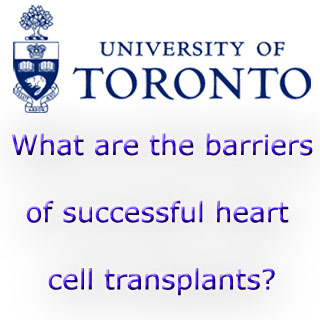
The experts have developed and examined a technique that supposedly permits quick viewing of dissimilar cell kinds for their capability to functionally incorporate into the heart tissue and apparently offers insights into the barriers that, until now, have prohibited transplanted cells from effectively merging with the patient’s heart tissue. This particular result was accounted by lead author Hannah Song.
Song, post-doctoral fellow in the Zandstra and Radisic labs, commented, “Muscle cells that make up the heart’s tissue are permanently lost during a heart attack. This cell loss is one of the leading causes of heart failure. Although cell transplantation can result in modest improvements in cardiac function, several challenges remain, including how to increase the survival, integration and functionality of the transplanted cells within the host tissue.”
For the purpose of the research, a number of items were used like a cardiac tissue model, engineered heart tissue, and quantitative molecular and electrophysiological analysis as a test-bed to display transplantation conditions and definite cell populations for their potential to functionally combine with host tissue. The study proposes, apparently for the first time, settings that may let pluripotent stem cell-derived cardiac progenitor cells to be efficiently transported for cardiac cell therapy.
Professor Cristina Amon, dean of the Faculty of Applied Science and Engineering, mentioned, “This is a testament to the extraordinary achievements by our leading researchers who are at the nexus of engineering and medicine in the university’s world-leading Institute of Biomaterials and Biomedical Engineering. Innovative engineering breakthroughs like this will enhance our healthcare treatments and advance Canada’s innovation agenda.”
Professor Catharine Whiteside, dean of the Faculty of Medicine mentioned that the work of Professor Zandstra and his colleagues is a great example of how their dedication and innovation in the lab can and will have a tremendous impact on the lives of patients.
The research was published in Proceedings of the National Academy of Sciences.
